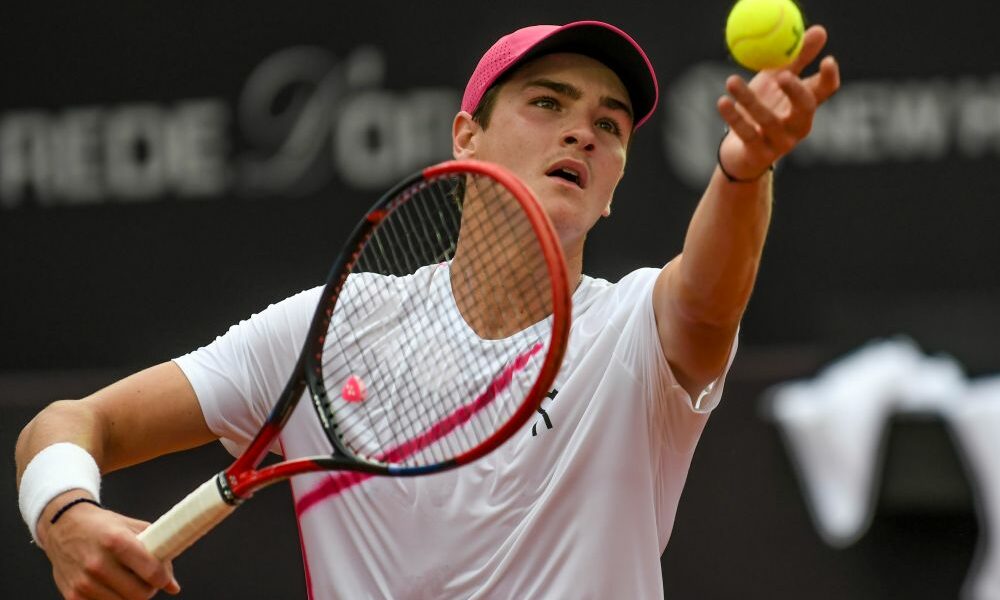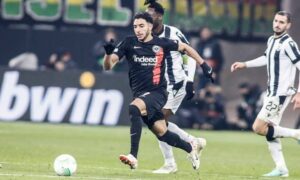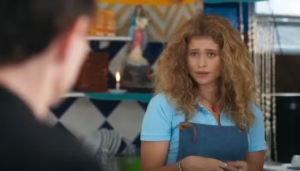João Fonseca, Brazil’s rising tennis star, faced an unexpected setback in the opening round of the Estoril Challenger 175 in Portugal on Wednesday, April 30, 2025. The 18-year-old from Rio de Janeiro, ranked 65th in the ATP world rankings, was defeated by Dutch player Jesper de Jong, world number 93, in straight sets, 6/2, 7/5. The match marked Fonseca’s first loss in a Challenger-level tournament this season, halting an impressive run of ten consecutive wins without dropping a set in such events. Played on the clay courts of Estoril, the match showcased De Jong’s consistency and Fonseca’s struggles to adapt his aggressive game to the slower surface after a dominant hard-court season.
The loss in Estoril caught the attention of Brazilian tennis fans, who have closely followed Fonseca’s meteoric rise since his breakthrough at the 2024 Rio Open. The young player, fresh off titles in Canberra and Phoenix and a strong showing at the ATP 250 in Buenos Aires, found it challenging to impose his powerful forehand against an opponent who skillfully mixed tactics and maintained composure in critical moments. Despite the defeat, Fonseca remains one of Brazil’s brightest prospects, with his next stop being the prestigious Masters 1000 in Rome, where he aims to regain momentum.
João Fonseca espera voltar a Portugal. pic.twitter.com/DbkH6iUo9K
— José Morgado (@josemorgado) April 30, 2025
The Estoril match began with De Jong asserting early dominance. The Dutch player raced to a 3/0 lead in the first set, capitalizing on Fonseca’s unforced errors. The Brazilian, known for dictating play with heavy groundstrokes, struggled to find rhythm, losing the set 6/2 in just 28 minutes. In the second set, Fonseca showed resilience, clawing back from a 0/3 deficit to level the score at 3/3, but he faltered in the decisive 12th game, allowing De Jong to secure a crucial break and close out the match.
- First set performance: De Jong won 85% of his first-serve points and 70% of total points.
- Second set fightback: Fonseca broke back to tie the set but lost his serve in the final game.
- Match stats: Fonseca committed 22 unforced errors compared to De Jong’s 12, who also hit 5 aces.
João Fonseca’s 2025 journey
The 2025 season has been a breakout year for João Fonseca. He kicked off the campaign by winning the Canberra Challenger 125 in Australia, dropping no sets and defeating American Ethan Quinn 6/4, 6/4 in the final. In March, Fonseca claimed the Challenger 175 title in Phoenix, USA, overcoming Kazakhstan’s Alexander Bublik in two tiebreaks. These results propelled him up more than 50 spots in the ATP rankings, cementing his status as one of the sport’s most promising talents.
Fonseca’s success extends beyond Challengers. In February, he clinched the biggest title of his career at the ATP 250 in Buenos Aires, defeating Argentina’s Francisco Cerundolo in the final. The victory on Argentine clay made him the youngest player to win an ATP 250 event since Carlos Alcaraz. However, transitioning to European clay, as seen in Estoril, has proven challenging after a season focused on hard courts.
Fonseca’s performance at the Madrid Masters 1000, held the week before Estoril, underscored his potential. In the Spanish capital, he defeated Denmark’s Elmer Moller in the first round but fell to world number 12 Tommy Paul in a competitive second-round match. Madrid served as preparation for the clay season, but the early exit in Estoril suggests tactical adjustments are needed for upcoming tournaments like Rome and Roland Garros.
Clay court challenges and Jesper de Jong’s strategy
Clay courts demand patience, precise footwork, and strategic play, qualities Jesper de Jong displayed masterfully in Estoril. The 24-year-old Dutchman used the surface to his advantage, mixing slices and high balls to disrupt Fonseca’s rhythm. In the first set, De Jong was nearly flawless, losing just three points on serve and neutralizing Fonseca’s attempts to rally. The set ended quickly, with the Brazilian struggling in longer exchanges.
The second set saw Fonseca fight back. After falling behind 0/3, he adjusted his game, hitting deeper shots and targeting De Jong’s backhand. A break in the sixth game leveled the score, raising hopes of a turnaround. However, De Jong remained composed, closing the match with a well-constructed sequence, including an ace in the final game.
- Tactical variety: De Jong’s use of slices and drop shots threw Fonseca off balance.
- Fonseca’s resilience: The Brazilian won every point in a key game to tie the second set.
- Decisive moment: A break in the 12th game of the second set sealed De Jong’s victory.
Impact of the loss on Fonseca’s season
The Estoril defeat, while notable, does not overshadow João Fonseca’s stellar 2025 season. At just 18, he has already notched wins over top-20 players, including Andrey Rublev at the Australian Open and Ugo Humbert at the Miami Open. The early exit in Portugal serves as a reminder of the challenges of competing at a high level, particularly on a surface that requires adaptation. For Fonseca, Estoril was a chance to gain clay-court experience, vital for his upcoming tournaments.
Fonseca’s May schedule includes the Rome Masters 1000, starting May 7, and Roland Garros, from May 25. Both events, played on clay, will test his progress. In Rome, he could face top players like Novak Djokovic, Rafael Nadal, or Jannik Sinner, depending on the draw. At Roland Garros, Fonseca will compete in his second professional Grand Slam, building on a promising Australian Open debut.
The loss also highlights the mental demands of professional tennis. Fonseca, praised for his maturity by figures like Djokovic, struggled to stay focused in Estoril. The pressure of being the eighth seed and maintaining an unbeaten Challenger streak may have played a role. Working with his coach, Guilherme Teixeira, will be key to strengthening his mental and technical game for the challenges ahead.
Outlook for Rome and Roland Garros
With Estoril behind him, João Fonseca gains extra training time before the Rome Masters 1000. The Italian capital’s Foro Italico, known for its vibrant atmosphere, will be a significant test. Fonseca, who has shown he can compete at this level, has a chance to challenge top players and earn valuable ranking points.
Roland Garros, the year’s second Grand Slam, is a milestone for Fonseca. Running from May 25 to June 8, the Paris tournament is the pinnacle of the clay season and a dream for any player. Fonseca, who idolizes 14-time champion Rafael Nadal, aims to advance in the main draw and gain experience. His Australian Open qualifying run and performances in Madrid and Estoril show he’s ready for big stages.
- Rome Masters 1000: May 7–18, broadcast on ESPN and Star+.
- Roland Garros: May 25–June 8, the premier clay-court Grand Slam.
- Fonseca’s goal: Advance at least one round in the main draw of both events.
2025 tournament schedule
João Fonseca’s 2025 season has been packed with tournaments across levels and surfaces. Below is a summary of his key events so far and confirmed upcoming appearances:
- January: Canberra Challenger (Australia) – Champion.
- February: ATP 250 Buenos Aires (Argentina) – Champion.
- February: Rio Open (Brazil) – First-round exit.
- March: Phoenix Challenger (USA) – Champion.
- March: Miami Masters 1000 (USA) – Third round.
- April: Madrid Masters 1000 (Spain) – Second round.
- April: Estoril Challenger (Portugal) – First round.
- May: Rome Masters 1000 (Italy) – To be confirmed.
- May/June: Roland Garros (France) – To be confirmed.
Fonseca’s impact on Brazilian tennis
João Fonseca is more than an individual talent; he’s a symbol of renewal for Brazilian tennis. Since Gustavo Kuerten’s three Roland Garros titles, Brazil has awaited a player with the potential to reach the top. Fonseca, at 65th in the world at 18, is reigniting that hope.
His influence extends off the court. With thousands of social media followers tracking his matches, Fonseca is drawing new fans to tennis. Events like the Rio Open and Madrid Open saw Brazilian supporters in the stands, inspired by his charisma and determination. While he avoids comparisons to Guga, they reflect the country’s hunger for a new tennis icon.
Fonseca also inspires Brazil’s next generation. Players like Thiago Monteiro, back in the top 100 in 2025, and junior prospects cite him as a role model. His presence in high-profile tournaments elevates Brazil’s status in global tennis, attracting sponsors and organizers.
Influence of tennis legends on Fonseca’s growth
João Fonseca’s career has been shaped by interactions with tennis greats. In Phoenix, former world number 1 André Agassi greeted him before a match. Novak Djokovic, the record Grand Slam holder, praised Fonseca’s maturity, calling him a potential “superstar.” These moments highlight the respect Fonseca has earned.
His coach, Guilherme Teixeira, plays a pivotal role. Known for strategic insight, Teixeira has helped balance Fonseca’s aggressive style with the patience needed on clay. Their partnership has yielded titles in Canberra, Phoenix, and Buenos Aires, and will be vital for Rome and Roland Garros.
Fonseca draws inspiration from Rafael Nadal, whose clay-court dominance is a benchmark. The Brazilian dreams of facing Nadal at Roland Garros, a matchup that could happen if both advance. Nadal’s influence is evident in Fonseca’s efforts to blend power with consistency.
Physical and mental preparation for the tour
The professional tennis circuit demands peak physical and mental conditioning. João Fonseca, despite his youth, follows a disciplined routine. Training in Rio de Janeiro between tournaments includes intense fitness and practice on varied surfaces. Adapting to clay, for instance, required refining footwork and shot timing, areas he’s still honing.
Mental resilience is a bigger challenge for young players. Fonseca’s frustration in Estoril, with errors in key moments, underscored this. Supported by sports psychologists and his team, he’s working to stay focused during grueling seasons. His Miami Open win, despite physical discomfort, highlights his grit.
- Physical training: Focus on endurance and explosiveness for clay.
- Mental work: Sessions with psychologists to handle pressure.
- Support team: Coach, fitness trainer, and family as his foundation.
Clay’s role in Fonseca’s career
Clay courts challenge players accustomed to hard courts, like Fonseca. While Canberra and Phoenix were on fast surfaces, Estoril’s clay demanded patience and slower-paced rallies. The loss to De Jong is a learning opportunity, emphasizing the need to master clay to climb the rankings.
Brazilian players have historically thrived on clay. Gustavo Kuerten built his legacy at Roland Garros, and Thomaz Bellucci and Fernando Meligeni also excelled. Fonseca’s Buenos Aires title shows his clay potential, but consistency in Europe, where competition is fiercer, is the next step.
The 2025 clay season, with Rome and Roland Garros, will be pivotal. A strong Paris campaign, even without a title, could boost Fonseca’s ranking and establish him as a top young player. Having faced Tommy Paul and Alex de Minaur, he’s prepared for bigger tests.
Fan expectations and pressure on Fonseca
João Fonseca’s rise has sparked immense expectations. In Brazil, where tennis seeks to reclaim past glory, he’s seen as Guga’s potential heir. Fans at the Rio Open and Madrid Open have shown unwavering support, but their enthusiasm brings pressure for quick results.
Fonseca handles fame with poise. In interviews, he emphasizes process over instant success, despite his Buenos Aires triumph at 18. The Estoril loss reminds fans that setbacks are part of growth, and his focus remains on long-term development.
Fans also fuel his motivation. In Miami, Fonseca said playing with Brazilian support felt like “being in Brazil.” This energy will be crucial at Roland Garros, where Brazilian fans in Paris could lift him in tough matches.
João Fonseca’s future in global tennis
At 18, João Fonseca is just starting, but his achievements position him among the best of his generation. His blend of power, technique, and charisma makes him a contender for major titles. Analysts like former top-4 player Brad Gilbert predict he could crack the top 25 by year’s end, a bold but plausible goal.
The professional circuit is unforgiving, with young stars like Carlos Alcaraz, Jannik Sinner, and Holger Rune dominating, alongside veterans like Djokovic and Nadal. Fonseca must balance immediate results with long-term growth. The clay season, with Rome and Roland Garros, will gauge his potential.
Win or lose, Fonseca is a cornerstone of Brazilian tennis. His journey inspires young athletes and rekindles national interest in the sport. The Estoril defeat is a minor chapter in a career poised for greatness.
- 2025 goals: Reach the top 50 and advance in Grand Slams.
- Inspiring youth: Fonseca as a role model for Brazil’s tennis future.
- Building a legacy: A bright path in the global circuit.

João Fonseca, Brazil’s rising tennis star, faced an unexpected setback in the opening round of the Estoril Challenger 175 in Portugal on Wednesday, April 30, 2025. The 18-year-old from Rio de Janeiro, ranked 65th in the ATP world rankings, was defeated by Dutch player Jesper de Jong, world number 93, in straight sets, 6/2, 7/5. The match marked Fonseca’s first loss in a Challenger-level tournament this season, halting an impressive run of ten consecutive wins without dropping a set in such events. Played on the clay courts of Estoril, the match showcased De Jong’s consistency and Fonseca’s struggles to adapt his aggressive game to the slower surface after a dominant hard-court season.
The loss in Estoril caught the attention of Brazilian tennis fans, who have closely followed Fonseca’s meteoric rise since his breakthrough at the 2024 Rio Open. The young player, fresh off titles in Canberra and Phoenix and a strong showing at the ATP 250 in Buenos Aires, found it challenging to impose his powerful forehand against an opponent who skillfully mixed tactics and maintained composure in critical moments. Despite the defeat, Fonseca remains one of Brazil’s brightest prospects, with his next stop being the prestigious Masters 1000 in Rome, where he aims to regain momentum.
João Fonseca espera voltar a Portugal. pic.twitter.com/DbkH6iUo9K
— José Morgado (@josemorgado) April 30, 2025
The Estoril match began with De Jong asserting early dominance. The Dutch player raced to a 3/0 lead in the first set, capitalizing on Fonseca’s unforced errors. The Brazilian, known for dictating play with heavy groundstrokes, struggled to find rhythm, losing the set 6/2 in just 28 minutes. In the second set, Fonseca showed resilience, clawing back from a 0/3 deficit to level the score at 3/3, but he faltered in the decisive 12th game, allowing De Jong to secure a crucial break and close out the match.
- First set performance: De Jong won 85% of his first-serve points and 70% of total points.
- Second set fightback: Fonseca broke back to tie the set but lost his serve in the final game.
- Match stats: Fonseca committed 22 unforced errors compared to De Jong’s 12, who also hit 5 aces.
João Fonseca’s 2025 journey
The 2025 season has been a breakout year for João Fonseca. He kicked off the campaign by winning the Canberra Challenger 125 in Australia, dropping no sets and defeating American Ethan Quinn 6/4, 6/4 in the final. In March, Fonseca claimed the Challenger 175 title in Phoenix, USA, overcoming Kazakhstan’s Alexander Bublik in two tiebreaks. These results propelled him up more than 50 spots in the ATP rankings, cementing his status as one of the sport’s most promising talents.
Fonseca’s success extends beyond Challengers. In February, he clinched the biggest title of his career at the ATP 250 in Buenos Aires, defeating Argentina’s Francisco Cerundolo in the final. The victory on Argentine clay made him the youngest player to win an ATP 250 event since Carlos Alcaraz. However, transitioning to European clay, as seen in Estoril, has proven challenging after a season focused on hard courts.
Fonseca’s performance at the Madrid Masters 1000, held the week before Estoril, underscored his potential. In the Spanish capital, he defeated Denmark’s Elmer Moller in the first round but fell to world number 12 Tommy Paul in a competitive second-round match. Madrid served as preparation for the clay season, but the early exit in Estoril suggests tactical adjustments are needed for upcoming tournaments like Rome and Roland Garros.
Clay court challenges and Jesper de Jong’s strategy
Clay courts demand patience, precise footwork, and strategic play, qualities Jesper de Jong displayed masterfully in Estoril. The 24-year-old Dutchman used the surface to his advantage, mixing slices and high balls to disrupt Fonseca’s rhythm. In the first set, De Jong was nearly flawless, losing just three points on serve and neutralizing Fonseca’s attempts to rally. The set ended quickly, with the Brazilian struggling in longer exchanges.
The second set saw Fonseca fight back. After falling behind 0/3, he adjusted his game, hitting deeper shots and targeting De Jong’s backhand. A break in the sixth game leveled the score, raising hopes of a turnaround. However, De Jong remained composed, closing the match with a well-constructed sequence, including an ace in the final game.
- Tactical variety: De Jong’s use of slices and drop shots threw Fonseca off balance.
- Fonseca’s resilience: The Brazilian won every point in a key game to tie the second set.
- Decisive moment: A break in the 12th game of the second set sealed De Jong’s victory.
Impact of the loss on Fonseca’s season
The Estoril defeat, while notable, does not overshadow João Fonseca’s stellar 2025 season. At just 18, he has already notched wins over top-20 players, including Andrey Rublev at the Australian Open and Ugo Humbert at the Miami Open. The early exit in Portugal serves as a reminder of the challenges of competing at a high level, particularly on a surface that requires adaptation. For Fonseca, Estoril was a chance to gain clay-court experience, vital for his upcoming tournaments.
Fonseca’s May schedule includes the Rome Masters 1000, starting May 7, and Roland Garros, from May 25. Both events, played on clay, will test his progress. In Rome, he could face top players like Novak Djokovic, Rafael Nadal, or Jannik Sinner, depending on the draw. At Roland Garros, Fonseca will compete in his second professional Grand Slam, building on a promising Australian Open debut.
The loss also highlights the mental demands of professional tennis. Fonseca, praised for his maturity by figures like Djokovic, struggled to stay focused in Estoril. The pressure of being the eighth seed and maintaining an unbeaten Challenger streak may have played a role. Working with his coach, Guilherme Teixeira, will be key to strengthening his mental and technical game for the challenges ahead.
Outlook for Rome and Roland Garros
With Estoril behind him, João Fonseca gains extra training time before the Rome Masters 1000. The Italian capital’s Foro Italico, known for its vibrant atmosphere, will be a significant test. Fonseca, who has shown he can compete at this level, has a chance to challenge top players and earn valuable ranking points.
Roland Garros, the year’s second Grand Slam, is a milestone for Fonseca. Running from May 25 to June 8, the Paris tournament is the pinnacle of the clay season and a dream for any player. Fonseca, who idolizes 14-time champion Rafael Nadal, aims to advance in the main draw and gain experience. His Australian Open qualifying run and performances in Madrid and Estoril show he’s ready for big stages.
- Rome Masters 1000: May 7–18, broadcast on ESPN and Star+.
- Roland Garros: May 25–June 8, the premier clay-court Grand Slam.
- Fonseca’s goal: Advance at least one round in the main draw of both events.
2025 tournament schedule
João Fonseca’s 2025 season has been packed with tournaments across levels and surfaces. Below is a summary of his key events so far and confirmed upcoming appearances:
- January: Canberra Challenger (Australia) – Champion.
- February: ATP 250 Buenos Aires (Argentina) – Champion.
- February: Rio Open (Brazil) – First-round exit.
- March: Phoenix Challenger (USA) – Champion.
- March: Miami Masters 1000 (USA) – Third round.
- April: Madrid Masters 1000 (Spain) – Second round.
- April: Estoril Challenger (Portugal) – First round.
- May: Rome Masters 1000 (Italy) – To be confirmed.
- May/June: Roland Garros (France) – To be confirmed.
Fonseca’s impact on Brazilian tennis
João Fonseca is more than an individual talent; he’s a symbol of renewal for Brazilian tennis. Since Gustavo Kuerten’s three Roland Garros titles, Brazil has awaited a player with the potential to reach the top. Fonseca, at 65th in the world at 18, is reigniting that hope.
His influence extends off the court. With thousands of social media followers tracking his matches, Fonseca is drawing new fans to tennis. Events like the Rio Open and Madrid Open saw Brazilian supporters in the stands, inspired by his charisma and determination. While he avoids comparisons to Guga, they reflect the country’s hunger for a new tennis icon.
Fonseca also inspires Brazil’s next generation. Players like Thiago Monteiro, back in the top 100 in 2025, and junior prospects cite him as a role model. His presence in high-profile tournaments elevates Brazil’s status in global tennis, attracting sponsors and organizers.
Influence of tennis legends on Fonseca’s growth
João Fonseca’s career has been shaped by interactions with tennis greats. In Phoenix, former world number 1 André Agassi greeted him before a match. Novak Djokovic, the record Grand Slam holder, praised Fonseca’s maturity, calling him a potential “superstar.” These moments highlight the respect Fonseca has earned.
His coach, Guilherme Teixeira, plays a pivotal role. Known for strategic insight, Teixeira has helped balance Fonseca’s aggressive style with the patience needed on clay. Their partnership has yielded titles in Canberra, Phoenix, and Buenos Aires, and will be vital for Rome and Roland Garros.
Fonseca draws inspiration from Rafael Nadal, whose clay-court dominance is a benchmark. The Brazilian dreams of facing Nadal at Roland Garros, a matchup that could happen if both advance. Nadal’s influence is evident in Fonseca’s efforts to blend power with consistency.
Physical and mental preparation for the tour
The professional tennis circuit demands peak physical and mental conditioning. João Fonseca, despite his youth, follows a disciplined routine. Training in Rio de Janeiro between tournaments includes intense fitness and practice on varied surfaces. Adapting to clay, for instance, required refining footwork and shot timing, areas he’s still honing.
Mental resilience is a bigger challenge for young players. Fonseca’s frustration in Estoril, with errors in key moments, underscored this. Supported by sports psychologists and his team, he’s working to stay focused during grueling seasons. His Miami Open win, despite physical discomfort, highlights his grit.
- Physical training: Focus on endurance and explosiveness for clay.
- Mental work: Sessions with psychologists to handle pressure.
- Support team: Coach, fitness trainer, and family as his foundation.
Clay’s role in Fonseca’s career
Clay courts challenge players accustomed to hard courts, like Fonseca. While Canberra and Phoenix were on fast surfaces, Estoril’s clay demanded patience and slower-paced rallies. The loss to De Jong is a learning opportunity, emphasizing the need to master clay to climb the rankings.
Brazilian players have historically thrived on clay. Gustavo Kuerten built his legacy at Roland Garros, and Thomaz Bellucci and Fernando Meligeni also excelled. Fonseca’s Buenos Aires title shows his clay potential, but consistency in Europe, where competition is fiercer, is the next step.
The 2025 clay season, with Rome and Roland Garros, will be pivotal. A strong Paris campaign, even without a title, could boost Fonseca’s ranking and establish him as a top young player. Having faced Tommy Paul and Alex de Minaur, he’s prepared for bigger tests.
Fan expectations and pressure on Fonseca
João Fonseca’s rise has sparked immense expectations. In Brazil, where tennis seeks to reclaim past glory, he’s seen as Guga’s potential heir. Fans at the Rio Open and Madrid Open have shown unwavering support, but their enthusiasm brings pressure for quick results.
Fonseca handles fame with poise. In interviews, he emphasizes process over instant success, despite his Buenos Aires triumph at 18. The Estoril loss reminds fans that setbacks are part of growth, and his focus remains on long-term development.
Fans also fuel his motivation. In Miami, Fonseca said playing with Brazilian support felt like “being in Brazil.” This energy will be crucial at Roland Garros, where Brazilian fans in Paris could lift him in tough matches.
João Fonseca’s future in global tennis
At 18, João Fonseca is just starting, but his achievements position him among the best of his generation. His blend of power, technique, and charisma makes him a contender for major titles. Analysts like former top-4 player Brad Gilbert predict he could crack the top 25 by year’s end, a bold but plausible goal.
The professional circuit is unforgiving, with young stars like Carlos Alcaraz, Jannik Sinner, and Holger Rune dominating, alongside veterans like Djokovic and Nadal. Fonseca must balance immediate results with long-term growth. The clay season, with Rome and Roland Garros, will gauge his potential.
Win or lose, Fonseca is a cornerstone of Brazilian tennis. His journey inspires young athletes and rekindles national interest in the sport. The Estoril defeat is a minor chapter in a career poised for greatness.
- 2025 goals: Reach the top 50 and advance in Grand Slams.
- Inspiring youth: Fonseca as a role model for Brazil’s tennis future.
- Building a legacy: A bright path in the global circuit.







